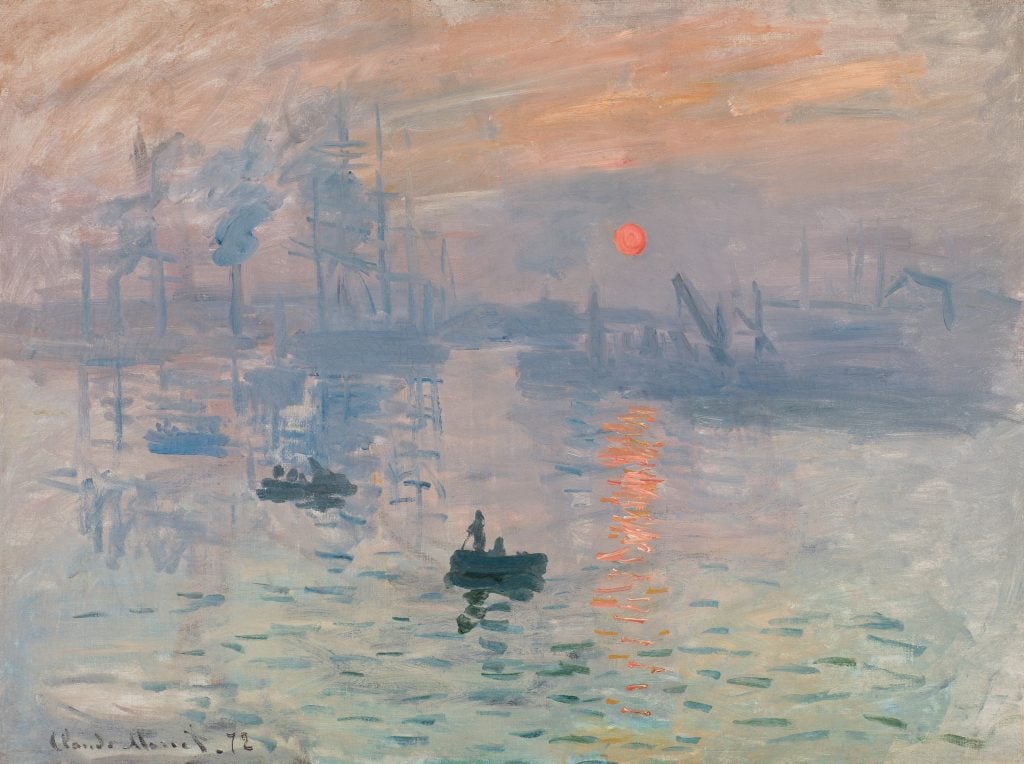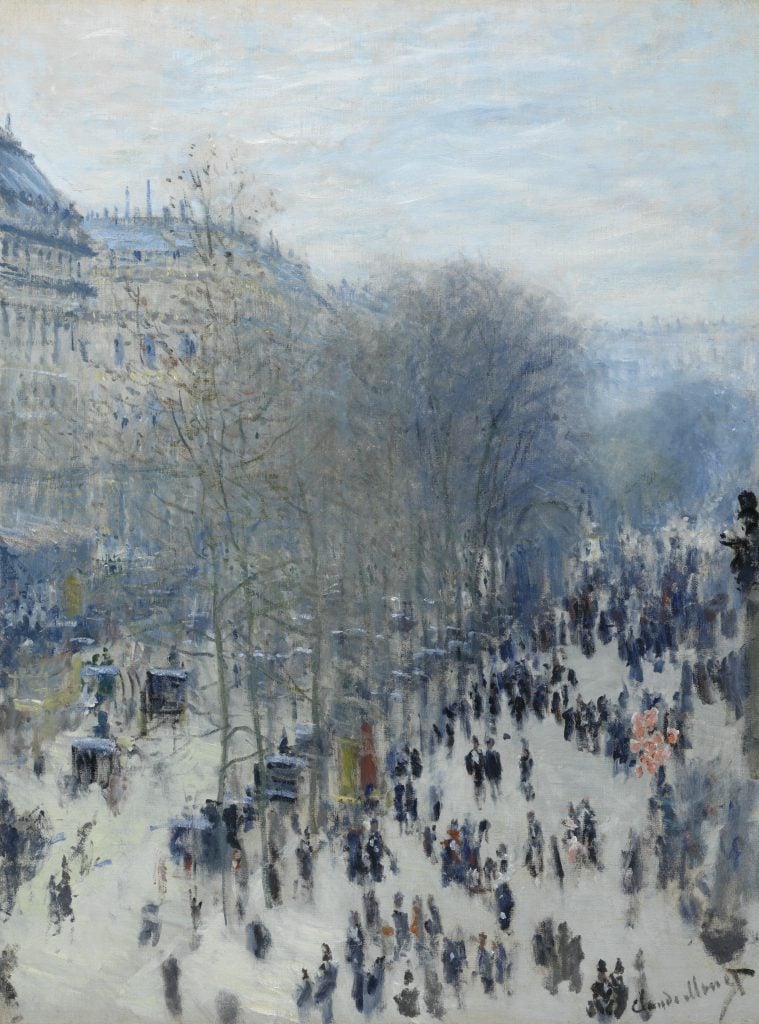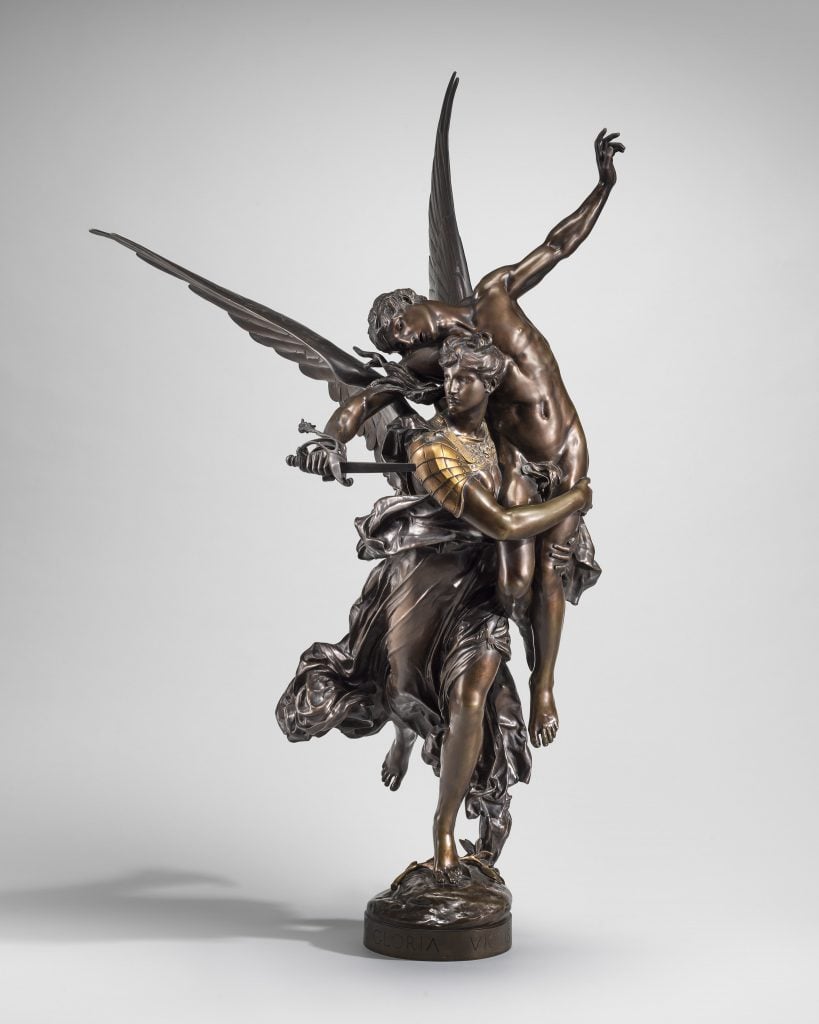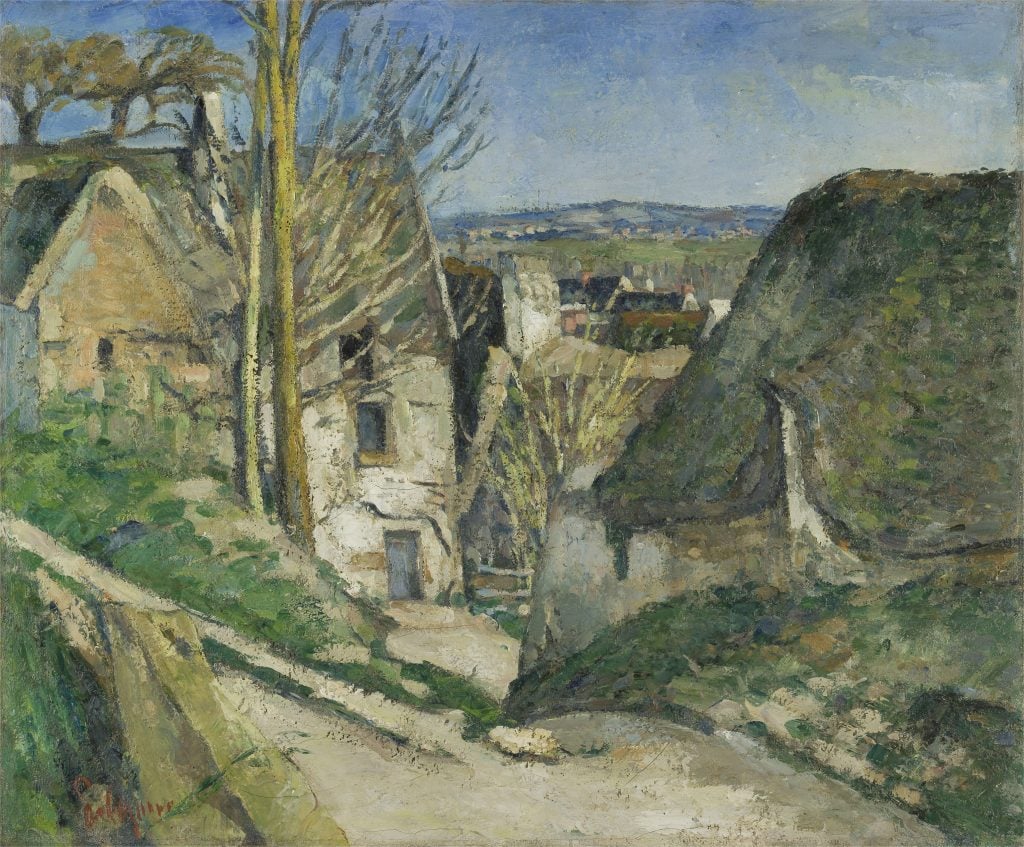Art & Exhibitions
The Monet Painting That Defined Impressionism Makes Its Stateside Debut
Monet's canvas including the word "Impression" in its title unwittingly christened one of art history's most beloved movements.

On a November morning in 1872, Claude Monet set up his easel and began furiously painting the foggy scene beyond his hotel balcony. As a Normandy native, Monet knew Le Havre’s harbor well, but he captured it like never before.
Freshly returned from London, where he’d admired the watery, smog-drenched atmospherics of J.M.W. Turner, the 32-year-old went further than his British predecessor, drowning the industrial seascape in a green-gray haze. Figures were bold outlines and the sun a tight ball of orange ricocheting across the water. Monet completed the work in a single sitting, and the offhanded name he lent it ahead of a revolutionary 1874 exhibition would come to connote an entire movement.
Impression, Sunrise has crossed the Atlantic for the first time as the centerpiece of “Paris 1874: The Impressionist Moment,” at Washington, D.C.’s National Gallery of Art. After debuting at Paris’s Musée d’Orsay in spring, it’s the second port of call for the show, which commemorates the 150th anniversary of the first Impressionist exhibition.
Through period photographs and 130 works, many of which were featured in the Paris exhibition, “The Impressionist Moment” seeks to add context and clarity to the 1874 show whose moment in the sun was fleeting, even if it now claims a long shadow.

Claude Monet, Boulevard des Capucines (1873–1874). Courtesy National Gallery of Art.
“This exhibition will closely reconstitute the very first impressionist exhibition,” said the Musée d’Orsay’s president, Christophe Leribault, in press materials. “It will invite visitors to immerse themselves in this decisive moment, a major rupture in the history of art, and help us understand its emergence and grasp its radicality.”
The story of the first Impressionist exhibition, as it has often been told, is a familiar one: a varied group of disenchanted artists rejects the Paris Salon by staging an alternative exhibition in the Parisian studio of the photographer Nadar, critics deride the art, and Impressionism is born.
This narrative overlooks the other ways in which the show was radical. The setting, for starters. Unlike the stuffy, tightly packed rooms of the Salon, Nadar’s studio was eccentrically decorated and boasted floor-to-ceiling windows. After dark, gas lamps were lit, which meant Parisians could visit after work.
This gestures to the economic revolution at the heart of the exhibition. The co-op of 31 artists was incentivized as much by finances as art. They wanted to control how their work was exhibited, priced, and sold. This came in the context of a Paris that was rapidly changing. The Third Republic was at hand, the city had been besieged during the Franco-Prussian war, and it was aggressively transformed by the orders of Baron Haussmann.

Antonin Mercié, Gloria Victis (1874). Courtesy National Gallery of Art.
It is perhaps surprising to learn that only seven of the 30 artists who were included in the historic show are today considered Impressionists. The numerous other artists who showcased at the 1874 salon get an outing at the National Gallery of Art nonetheless. There’s a classic history painting by Jean-Léon Gérôme that shows Father Joseph, a confidant of Cardinal Richelieu, ascending the stairs of the Royal Palace. Another inclusion is the museum’s own neoclassical sculpture by Antonin Mercié, Gloria Victis (1874).

Paul Cézanne, House of the Hanged Man, Auvers-sur-Oise (1873). Courtesy National Gallery of Art.
To be sure, Impressionism remains the focus and many of the names swept up by the broad brush of the movement are on show. There’s Edgar Degas and his visits to the race grounds; Pierre-Auguste Renoir provides a ballerina; Paul Cézanne shows rural houses built of bold angularity; Édouard Manet paints a charming scene of mother and daughter at a railway station; and Berthe Morisot shows fashionable scenes of light and whimsy.
In retrospect, Impressionism can seem somewhat inevitable, a necessary reaction against the constraints of a conservative art establishment. “The Impressionist Moment” shows this isn’t the case. Take Monet’s breakthrough work, for instance. Soon after the 1874 exhibition closed, its name was forgotten, and when it reappeared it was called “Fog Effect.”
“Paris 1874: The Impressionist Moment” is on view at the National Gallery of Art, Constitution Avenue NW, Washington, D.C., through January 19, 2025.





